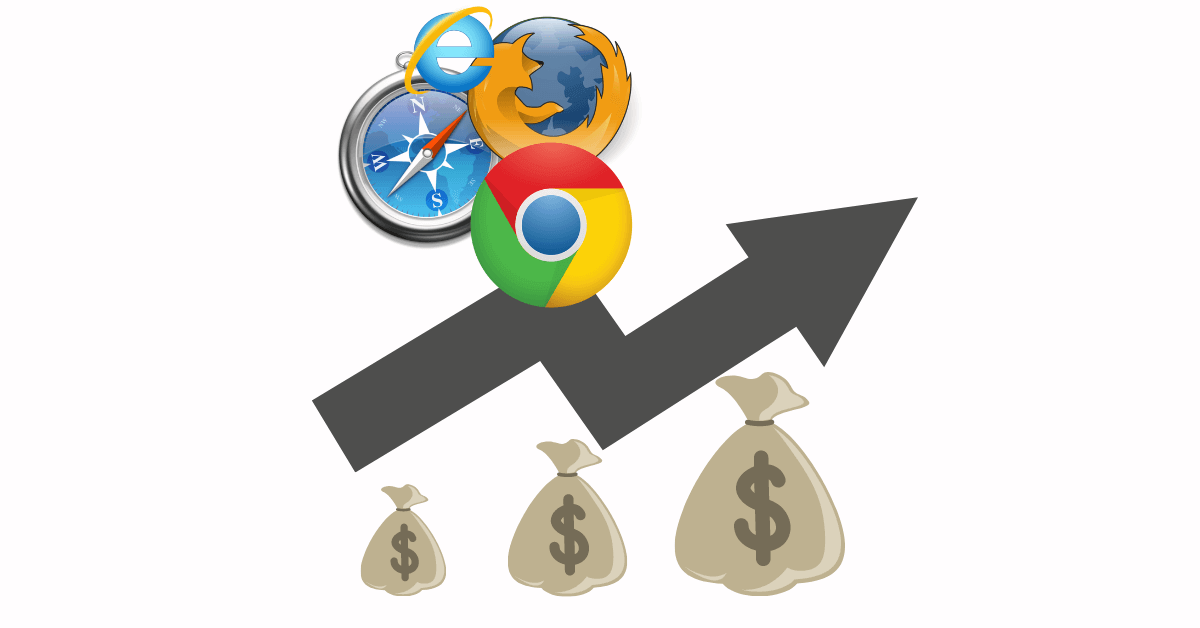How Internet Browsers Make Money
Browser wars have been happening since the early days of the internet. In this article, we will explore the history of browser wars and various monetization strategies used by different internet browsers to generate revenues over the years.
Search Engine Partnerships and Royalties
One of the most common ways for browsers to generate revenue is through search engine partnerships and royalties. Mozilla Firefox was a pioneer in this model. In the late 2000s, when Firefox held over 25% of the browser market share, it signed lucrative deals with search engines like Yahoo and Google to make them the default search option within Firefox. These search partners would pay annual royalties to Mozilla based on the search volumes generated through the Firefox browser. For example, in 2014 Google paid $323 million in royalties to Mozilla, accounting for nearly 98% of Mozilla’s total revenue that year.

Pre-installation Agreements and Distribution Deals
Another strategic monetization approach used by browsers is signing pre-installation agreements and distribution deals with laptop/PC manufacturers. For instance, when Microsoft Internet Explorer was bundled with Windows OS in the late 90s, it helped IE quickly gain dominance in the desktop browser market. Similarly, Apple Safari coming pre-installed on all Mac computers allowed it to capture the Macintosh desktop market share. These distribution partnerships provide easy access to huge user bases without additional customer acquisition costs.
User Data Harvesting and Behavioral Targeting
With billions of people using browsers to access the internet every day, browsers have become goldmines of user behavioral data and analytics. Especially for tech giants like Google, this treasure trove of web browsing data, search history, interests, and online activities has massive monetization potential. Google leverages user data harvested through Chrome to hyper-target digital ads across their vast network, optimizing ad performance and revenue. Precisely targeted ads command higher CPCs, helping Google maximize their multi-billion dollar annual ad sales.
built-in Services and Product Bundles
Beyond search and ads, browsers also generate secondary income streams by bundling value-added services and products. For example, Google Chrome seamlessly integrates popular Google products like Gmail, Drive, Photos etc., driving more usage and stickiness to their overall ecosystem. This consolidated consumer experience locks users into Google’s software bundle, increasing switching costs to competitors. Products built around a browser further augment the brand value and recurring revenue potential.
Third-party App Marketplaces and Extension Stores
Most modern browsers operate thriving third-party software marketplaces for extensions, add-ons, and apps. Developers sell premium extensions/apps or offer freemium models through these stores. For instance, the Chrome Web Store hosts over 170,000 extensions used by billions of people monthly. Google takes a 5-30% transaction fee on all paid downloads and in-app purchases through this marketplace. Given Chrome’s massive scale, even small fees accumulate into sizable additional profits over time.
Advertising Networks and Affiliate Commissions
Some pioneer browsers in the early 2000s experimented with embedding third-party ads directly into the browser interface. While intrusive for users, this was a way to monetize large audiences. Modern browsers avoid intrusive ads but run affiliated advertising networks that share commissions. For example, searches conducted within the Firefox browser pump affiliate revenues from partner networks like Amazon, eBay etc. based on click-throughs and purchases.
Freemium Versions and Premium Subscriptions
A few niche browsers are piloting the freemium SaaS model to generate recurring revenues. For example, niche privacy-focused browsers like Brave offer a free version with limited features alongside subscription premium tiers unlocking additional benefits and services. As consumer tastes evolve, more general purpose browsers may also offer premium subscriptions for dedicated support, advanced features or ad-free private browsing experiences. Only time will tell if the market is ready to pay for private browsing or not.
In summary, while most consumers assume browsers are “free”, different monetization strategies enable major browsers and their parent companies to generate billions in annual revenues. User data, search deals, distribution partnerships, app marketplaces, advertising and subscriptions form the multi-pronged revenue equations powering this immense digital industry behind the scenes. Strategic monetization will continue shaping browser wars in the coming decades.

